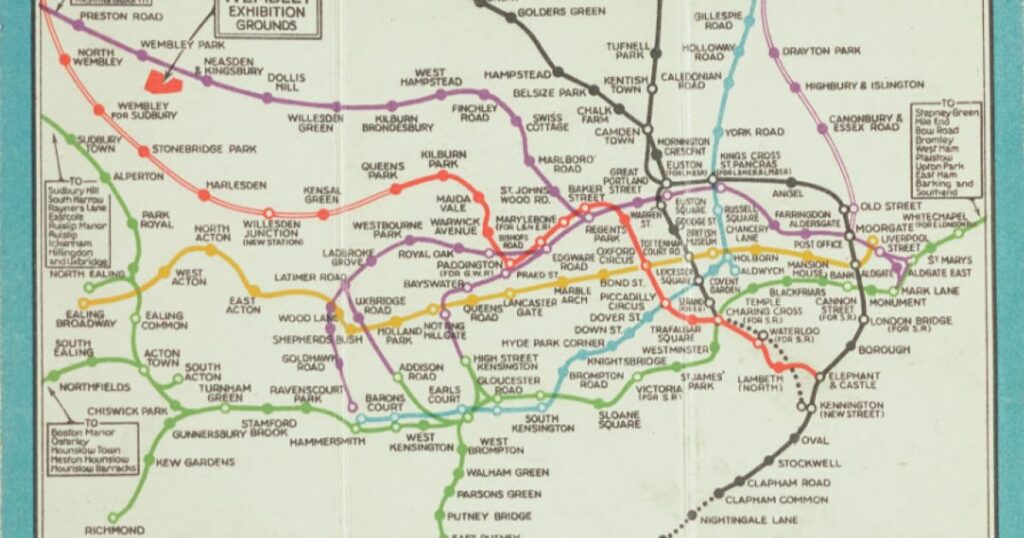The first to be built was the City & South London Railway, which was also the first electric Tube railway in the world.
Opened in 1890, the route ran between Stockwell and King William Street near London Bridge.
In 1907, the Charing Cross, Euston & Hampstead Railway opened, heading north from Charing Cross to Highgate on one branch and Golders Green on the other.
Over the coming weeks, we’ll be using maps to tell you the story of each of London’s Tube lines. The images used in this story have been provided by TfL Corporate Archives. To find out more about the history of the London Underground visit TfL’s Google Arts and Culture page – https://artsandculture.google.com/story/welcome-to-tfl-tfl-archives/wAWRESAnwnAAnQ?hl=en
At one point, this railway was known as the Hampstead and Highgate line.
Six years later, the City & South London Railway joined the umbrella company running the Charing Cross, Euston & Hampstead Railway.

Work to connect the two railways started in 1922, with new tunnels built between Euston and Camden Town, as well as between Embankment and Kennington.
By the time the line was integrated with London’s other Underground routes in 1933, extensions had been built to Edgware in the north and Morden in the south.
The route was known as the Edgware, Highgate and Morden line in 1933, then the Morden-Edgware line a year later.

It was not until 1937 that it became the Northern line, named after the Northern Heights extension project, which would have brought the route to Bushey and Elstree.
This vision was ultimately never realised, although a station was opened at East Finchley in 1939, and services started over existing track to High Barnet and Mill Hill shortly afterwards.
The current Great Northern route from Moorgate towards Finsbury Park was shown as a Northern line branch until 1976, when it was transferred to British Rail.

Half a kilometre of new tunnels was built in 1988 to divert trains while Angel station was rebuilt, with the new station opening in 1993.

The line became known as ‘the Misery Line’ in the 1990s – although newer trains and improved reliability seem to have dispelled this.
That name never appeared on official maps, which remained largely unchanged for 80 years – until a 3km extension opened in 2021 in south London.
The new spur from Kennington stops at Nine Elms and Battersea Power Station.
Today, the route stretches 61km and 52 stations, with northern termini at Edgware, High Barnet and Mill Hill East, and southern termini at Battersea Power Station and Morden.
Make sure to check our website at the same time next week to find out about the history of the Waterloo & City line.




